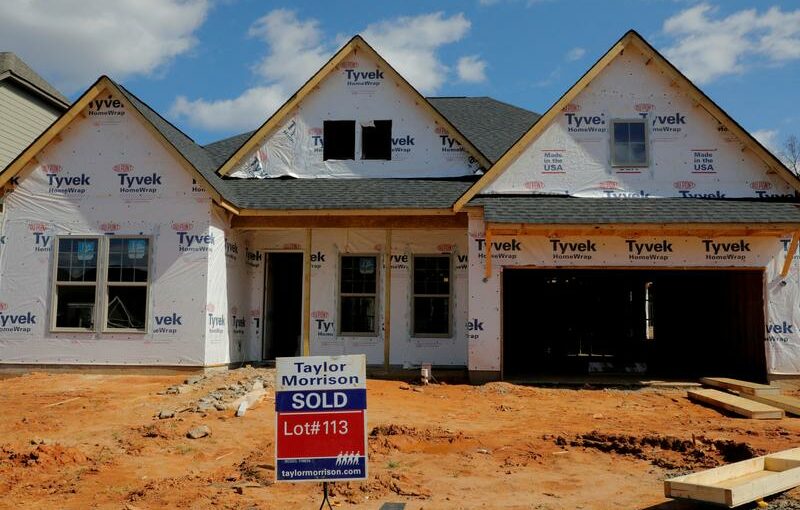WASHINGTON (Reuters) – U.S. construction spending rose to a record high in November, boosted by a robust housing market amid historically low mortgage rates, which could help blunt some of the hit on the economy from raging COVID-19 infections.
The Commerce Department said on Monday that construction spending increased 0.9% to $1.459 trillion, the highest level since the government started tracking the series in 2002. Data for October was revised higher to show construction outlays accelerating 1.6% instead of 1.3% as previously reported.
Strong construction spending supports economists’ predictions that the economy grew at around a 5% annualized rate in the fourth quarter. The sharp step-down from a record 33.4% pace in the third quarter reflects a resurgence in coronavirus cases, which has slammed the services sector.
Growth is also slowing following the exhaustion of more than $3 trillion dollars in government pandemic relief and delays in approving another rescue package. Nearly $900 billion in fiscal stimulus was approved in late December.
Construction spending accounts for about 5% of gross domestic product.
“The data imply modest upside risk for our GDP growth forecast of a 4.3% rate in the fourth quarter,” said Mike Englund, chief economist at Action Economics in Boulder, Colorado. “The housing boom is lifting construction activity overall … despite some stalling in the transactions-related housing data in recent months.”
Economists polled by Reuters had forecast construction spending would rise 1.0% in November. Construction spending increased 3.8% on a year-on-year basis in November.
Spending on private construction projects increased 1.2%, fueled by investment in single-family homebuilding amid record-low mortgage rates and a pandemic-driven migration to suburbs and low-density areas. That followed a 1.6% advance in October.
Spending on residential projects increased 2.7% after surging 3.2% in October.
But outlays on nonresidential construction like gas and oil well drilling fell 0.8% in November. The pandemic has depressed prices, leading to a contraction in spending on nonresidential structures in the third quarter. The fourth straight quarterly drop in investment in nonresidential structures bucked a rebound in overall business investment.
Spending on public construction projects eased 0.2% in November after rising 1.6% in October. State and local government outlays edged up 0.1%, while federal government spending dropped 4.2%.
“Nonresidential and public construction remain subdued owing to weak demand related to disruptions from virus containment as well as budget constraints,” said Rubeela Farooqi, chief U.S. economist at High Frequency Economics in White Plains, New York.
Source: Read Full Article
